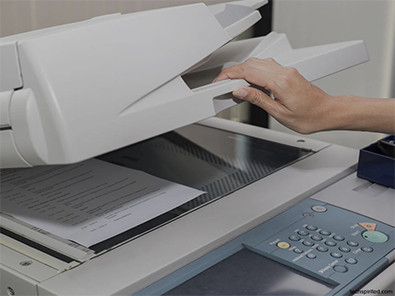Running a successful business requires more than just a great product or service, it demands a clear understanding of your finances. Knowing how to read and interpret your financial statements allows you to make smarter decisions about spending, investing, and growing your business.
Financial literacy may seem intimidating, but it’s one of the most powerful tools any business leader can have. By understanding your numbers, you gain valuable insights into your company’s performance and long-term potential. This clarity helps you make strategic choices about leasing equipment, expanding operations, or investing in new technology.
Understanding the Core Financial Statements
Every business relies on three key financial statements: the balance sheet, the income statement, and the cash flow statement. Each provides a unique perspective on your company’s health.
1. Balance Sheet
Your balance sheet shows what your business owns (assets) and owes (liabilities) at a specific point in time. It also includes equity, which represents the owners’ stake in the company. Understanding your balance sheet helps you see whether your business is financially stable and capable of handling new expenses or investments.
2. Income Statement
The income statement, or profit and loss statement, tracks revenue, expenses, and net profit over a period. This document highlights whether your business is making money or losing it. By analyzing trends in revenue and expenses, you can identify areas to cut costs or boost profits.
3. Cash Flow Statement
Cash flow is the lifeblood of your business. This statement shows how cash moves in and out of your business, including operating activities, investing activities, and financing activities. Knowing your cash flow ensures you have the liquidity to meet payroll, pay suppliers, and invest in growth opportunities.
Why Cash Flow Management Matters
Cash flow management is crucial for businesses in El Paso and across industries. Positive cash flow ensures your company can cover day-to-day expenses without relying heavily on credit. It also allows for better planning of equipment purchases or leases.
Businesses often confuse profit with cash availability. You might be profitable on paper, but if your cash flow is tight, you can struggle to meet obligations. Monitoring cash flow through your financial statements helps you anticipate shortfalls and take corrective action before issues escalate.
CapEx vs. OpEx: Making the Right Spending Choices
When managing your finances, distinguishing between capital expenses (CapEx) and operating expenses (OpEx) is key.
- Capital Expenses (CapEx): These are long-term investments, like buying office equipment or upgrading technology. CapEx affects your balance sheet and is depreciated over time.
- Operating Expenses (OpEx): These are day-to-day costs, like rent, utilities, and maintenance. OpEx affects your income statement directly and is fully deducted in the period incurred.
Understanding this distinction helps you decide whether to buy or lease equipment. For example, leasing printers or copiers through a service can turn a large CapEx investment into manageable monthly OpEx, preserving cash flow for other priorities.
How to Use Financial Statements to Make Smarter Decisions
Financial statements are more than reports: they are decision-making tools. Here’s how to put them to work for your El Paso business:
- Assess Profitability: Use the income statement to identify which products or services generate the most revenue and which drain resources.
- Plan Investments: Review your balance sheet to determine if you have the financial stability to invest in equipment, hire staff, or expand operations.
- Monitor Liquidity: Track cash flow to ensure you can cover monthly expenses and avoid late payments.
- Compare Options: Analyze CapEx vs. OpEx to decide between purchasing equipment outright or leasing it for better cash flow management.
- Set Goals: Use insights from your financial reports to set realistic growth targets and operational benchmarks.
Supporting Tools and Practices for El Paso Business Owners
- Regular Financial Reviews: Schedule monthly or quarterly reviews of all three statements. This keeps your finger on the pulse of your business.
- Accounting Software: Tools like QuickBooks, Xero, or FreshBooks can simplify tracking and reporting.
- Professional Guidance: A CPA or financial advisor can help interpret complex numbers and provide recommendations specific to your El Paso business.
- Benchmarking: Compare your financial metrics to industry standards to identify strengths and weaknesses.
By combining these practices, you can make informed decisions with confidence, reduce financial risk, and prepare your business for sustainable growth.
Understanding Leasing Options for Equipment
Many El Paso businesses face the choice of buying or leasing equipment. Financial statements can guide this decision. Leasing converts a large CapEx outlay into manageable OpEx payments, which keeps cash flow steady.
Services like Clear Choice Technical Services provide flexible leasing and rental options for copiers, printers, and other essential office equipment. Using financial data to guide leasing decisions ensures your company remains agile, minimizes upfront costs, and maintains the ability to invest in growth opportunities.
Long-Term Financial Planning
Reading and using financial statements is not just about today: it’s about building a roadmap for the future. Strong financial literacy helps you anticipate market changes, plan for economic fluctuations, and make strategic investments that pay off over time.
For example, knowing when to upgrade or lease new technology can prevent downtime and maximize productivity. Tracking trends in revenue, expenses, and cash flow allows your El Paso business to adapt quickly and maintain a competitive edge.
Common Mistakes to Avoid
Even experienced business owners make mistakes with financial statements:
- Ignoring Cash Flow: Profit doesn’t always equal liquidity. Monitor cash carefully.
- Mixing Personal and Business Finances: Keep accounts separate to ensure accurate reporting.
- Overlooking Small Expenses: Minor costs can add up and impact profitability if not tracked.
- Failing to Review Regularly: Financial statements are only useful if reviewed consistently and acted upon.
Avoiding these mistakes strengthens your financial health and positions your business for long-term success.
Take Action: Master Your Numbers in El Paso
Understanding your finances is the first step to making better business decisions. Start by reviewing your balance sheet, income statement, and cash flow statement. Use this information to evaluate CapEx vs. OpEx, manage cash flow, and make informed investments.
For El Paso businesses, Clear Choice Technical Services can assist with cost-effective equipment solutions that align with your financial strategy. Whether it’s leasing a copier, printer, or office equipment, leveraging your financial insights ensures you choose options that support your growth.
Make Your Numbers Work for You
Financial literacy is more than just a skill: it’s a competitive advantage. By learning how to read and use your financial statements, you can make smarter decisions, manage cash flow effectively, and plan for the long-term success of your El Paso business.
Know your numbers and take control of your financial future. Start today by analyzing your reports. Your numbers have a story to tell: let them guide your next business move.
For tailored leasing and equipment solutions that fit your budget and growth goals, reach out to Clear Choice Technical Services at (915) 201-3200.


